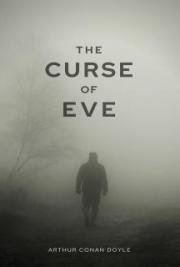It was back in 2008 or 2009 in east Charlotte. Yeah, one of those years. It was a mild spring day. Most likely it was a Saturday morning in early May. It wasn’t too buggy yet.
My son, future Agent 666 (his number choice, not mine; he would later go with 66 when it became freed-up after a rude agent was ejected), was only 5 or 6 years old at the time. We, just the two of us, were sorting out the forty-odd spray-paint cans in the back-yard shed (which was incidentally built by the late, great Agent 107).
We would shake the aerosol cans and then give them a quick discharge. Many of the valves were clogged. If they seemed to have a fair amount of paint still inside, we put them in a designated box. (I would later clean the valve caps with a solvent.) If not, we chucked them into a trash can. If they sprayed satisfactorily, we put them back inside the broken, nearly antique, dining-room-style, cherry-colored, four-shelved, cobwebbed, plate display case.
I began to shake the ninth or tenth can. Before I depressed the valve, my son had a question.
“Dad, what’s that noise? It sounds like there’s a marble inside that spray can.”
“It just might be a marble, son. The correct term would be a pea. The pea helps mix the paint; it gets the pigment and vehicle to combine with the propellant. Sometimes they used glass marbles.” Vehicle?
I depressed the valve cap. No paint came out. It was clogged shut. I then tossed it into the trash, since the can was very light (almost empty).
“Hey dad, is it possible to get the pea out of that can?”
“Yeah, I guess so. Why, son?”
“I want to see what it looks like.”
“Well, I think we already know what color it is: pea green.” [the color name on the label]
My son then picked the spray-paint can back out of the trash. “C’mon, dad, let’s open up this can and see what the pea is made of.”
“Ok, sure. Let me get a hacksaw, a hammer, and a nail.” A nail?
“Are you going to nail holes in the can, dad?”
“Just one hole, son, to relieve any remaining pressure.”
I left for the house and quickly returned with the three items. I pierced the can with a galvanized 10d nail. There was no audible or visible release of any propellant. Good, totally dead. Pressure equalized.
I then cut the top of the spray can off with the hacksaw. It only took about a minute. Some green paint leaked onto the old plywood floor as I pulled the top off. When I tilted the headless can downward, the little pea wobbled out, leaving a medium-green paint trail.
The pea was completely coated in green paint. I wasn’t sure what it was made of, but I suspected a cheap metal. It was also the same size as a common salad pea.
Then the excess paint slowly ran off the pea, exposing its true shape, which was not a perfect sphere. It had numerous flat spots and tiny dents, and was obviously made of a soft metal. Moreover, the little, green, metallic ball looked just like a real pea that had fallen out of its pod.
“So, that’s what makes that rattling sound when you shake the can?” my son asked.
“Yes, that is our culprit, son. This one is made of metal, not glass.”
My son then plucked the green pea from the oil-stained – and now green-streaked – wooden floor. He wiped the paint off with a shop rag. He then studied the banged-up, hollow, lightweight ball for a while. Then he seemed surprised.
“Dad, there’s a design on this pea. It looks like LFC’s [Liverpool Football Club] liver bird.”
“Let me see that, son.”
My son handed me the dull, gray, metal, oblate orb. I saw what he was talking about. It kind of looked like the LFC liver bird design. Wow! Well, look at that.
“Yeah, I see it now, son.”
“Why would anyone take the time to engrave a liver bird onto a paint-can pea, dad? Most likely, no one would ever see it.”
“Well, we are seeing it now. Maybe this spray paint was made by Crown Paints. They were the LFC jersey sponsors from ’82 to ’88.”
“Was that after Candy?”
“No, son, that was before Candy.”
“So, this pea is over twenty years old?”
“Yes, son. My dad gave me all of this spray paint when he gave me his tools. Some of these cans are ancient, almost as old as me.”
“Dad, you’re not ancient. Dinosaurs are ancient. You are not fossil fuel yet.”
“Why, thanks, son.” Not fossil fuel yet. But, eventually.
“Dad, I wonder if the man or woman who carved the liver bird onto this paint pea is still alive.”
“Yeah, I wonder, son. And, supposing that he or she is still alive, I wonder if they would ever suspect that a father and son in Charlotte – somewhere in America – would be discussing their miniature, seemingly forever hidden away, artistic creation right now.” And thinking: Dad’s a pea brain.
“Somewhere in America? What do you mean?”
“You see, son, this spray paint can was not made in the US. Crown Paints is in Darwen, England. It’s up in the northwest, not too far from Liverpool. Though, it’s closer to Manchester.”
“Well, I want to keep it.”
“Are you sure that you don’t want to plant it in the vegetable garden? A new spray-paint can may sprout after a few weeks.”
“Dad, I’m not stupid! Spray-paint cans don’t grow from seeds.”
“Just checking.” I chuckled.
“Where was this pea made, dad? Was it made in England, too?”
“Maybe. Or, they may have imported them from Asia.”
“Why?”
“Cheaper.”
“Oh. Hey, I wonder what the person who made this pea was thinking when it was finished.”
“Well, son, these little peas are made by the thousands at a time. I doubt that anyone stopped to think about one pea.”
“Well, this is a special pea, and I want to keep it!”
“Sure, son. Place it in one of those plastic cubes that we use for rare coins so that you don’t lose it.”
“Dad, you didn’t put this liver-bird pea in the spray paint can, did you?”
“Now, son, how could I have done that?”
“Well, my friend showed me how a ship-in-a-bottle is done. The ship is assembled outside the bottle and slid in flat. Then, by pulling a thread, the ship rises.”
“There’s no tricking you, son.”







